As Sino-American ties descend to a new post-Cold War low, Western analysts increasingly place the blame on Chinese President Xi Jinping’s aggressive international activism. But to what degree is this muscular foreign policy the product of one man versus the larger system in which he is embedded?
This is a question of profound importance to bilateral ties. Too often, analysts over-personalize China’s foreign policy by contrasting a supposedly weak and timid Hu administration with a bold and striving Xi administration. But the reality is far more complex, and Xi’s power consolidation and cult of personality is overshadowing important ways in which his foreign policy exhibits continuity with past trends.
The link between Hu and Xi’s foreign policy has meaningful policy stakes. Widening the lens with which we view present Chinese foreign policy helps bring into focus a strategy that appears to enjoy a high-level consensus among Chinese Communist Party (CCP) officials. Many aspects of an increasingly assertive Chinese policy that the United States finds disagreeable are not “bugs” introduced by Xi’s unique power consolidation and aggressiveness but enduring “features” of that consensus.
The decline of “hide and bide”
In popular media, Xi Jinping often receives credit from moving Chinese grand strategy away from Deng Xiaoping’s strategic guideline [战略方针] that China needed to “hide capabilities and bide time.” That guideline, more precisely rendered as “Tao Guang Yang Hui” [韬光养晦], dated back to the end of the Cold War when the United States rose to become China’s chief threat, prompting Deng Xiaoping to advise his successors to adhere to a strategy of non-assertiveness. The strategy was about more than avoiding the costs of international leadership; it was also about avoiding conflict with the United States, reducing the risk of encirclement by China’s neighbors, and creating space for Chinese development.
While it is true that Xi had almost never mentioned Tao Guang Yang Hui during his tenure and that one of his few references actually called for China to “step out from Tao Guang Yang Hui,” the formal shift away from this core strategic guideline clearly began under Hu, as recently published documents now make clear.
To understand how Xi’s policy shares continuity with the past, it is important to recognize that for decades, China’s leaders have been explicit in open sources that they never expected Tao Guang Yang Hui to be permanent. Deng, Jiang, and Hu’s own speeches all conceded that adherence to the strategy was based on China’s assessment of the “international balance of power” [国际力量对比] and (implicitly) that it would therefore one day expire.1 Accordingly, when that balance of power finally shifted after the global financial crisis that began in 2008, China’s strategy changed. In a 2009 speech the following year, then President Hu Jintao modified Tao Guang Yang Hui by stressing that China needed to “Actively Accomplish Something” [积极有所作为].2 This may seem a trivial semantic point, but Tao Guang Yang Hui and Accomplish Something were placed in a “dialectical relationship” in key Party texts. In laymen’s terms, that meant they were basically opposite concepts. When Hu stressed one part of the dialectic, he was effectively departing from the other, thereby substantially revising Chinese strategy.
Some suggest that Hu was reluctant to depart from Tao Guang Yang Hui or that he was pushed into doing so by hawks, but there is no real evidence for this view, and it is clear Hu’s 2009 formulation was reiterated throughout his term. In sum then, Xi’s departure from “hiding and biding” had roots in a Party consensus that emerged roughly a decade ago, and his predecessor’s administration in many ways inaugurated the shift. Attributing it to Xi ignores this fact.
The return of “national rejuvenation”
Many scholars stress Xi Jinping’s focus on “national rejuvenation” as if he were the originator of a new concept that increasingly guides Chinese behavior. History, however, shows that the concept has a long lineage that precedes Xi and that it has always been at the center of the Party’s ambitions. As the scholar Zheng Wang notes: “the explicit goal of rejuvenation goes at least as far back as Sun Yet-Sen, and has been invoked by almost every modern Chinese leader from Chiang Kai-Shek to Jiang Zemin and Hu Jintao.” While the term has become a prominent feature of Chinese propaganda under Xi, it has never been far from the focus of the Party.
Similarly, Xi has also received attention for his focus on the “two centenary goals,” but these too have analogs in Party history. The goals are essentially built around important 100-year anniversaries. The first goal seeks a moderately prosperous society by 2021, a century after the founding of the Communist Party; the second seeks a China that has fulfilled its national rejuvenation by 2049, a century after the founding of the People’s Republic of China. While Xi stressed these goals after assuming leadership, they were in fact part of Jiang Zemin’s 15th Party Congress Work Report in 1997 and appeared in several documents in less formalized terms even before that. Xi has undoubtedly brought greater attention to these concepts, but the fact that they were already key parts of the CCP’s governing philosophy again demonstrates the way in which key attributes of his agenda have deep roots in the Party.
Chinese Military, Economic, and Political Activism
China’s major military, economic, and political investments under Xi have clear roots in the tenure of Hu.
First, while Xi Jinping has pushed through a dramatic military reorganization, other landmark components often attributed to him—including China’s turn to a blue-water navy—began well before his leadership. Indeed, it was President Hu’s administration that inaugurated China’s shift away from two decades of anti-access/area-denial capabilities that were intended to complicate U.S. intervention in favor of a new emphasis on power projection and amphibious capabilities. In 2003, nine years before Xi assumed leadership, President Hu announced China’s “Malacca Dilemma” and suggested China needed the blue-water capabilities to protect the sea lines upon which it depends; the next year, he tasked the navy with “new historic missions” away from China’s shore. After the global financial crisis, Hu committed resources to these goals. In 2009, the Politburo Standing Committee reportedly approved work on refitting the former Soviet-carrier Varyag into a Chinese aircraft carrier. Not long after, China began plans to construct a second and third carrier and to accelerate production lines on surface vessels. Ultimately, it was Xi’s predecessor who announced the goal of becoming a “maritime great power,” fulfilling missions in the “far seas,” and securing Chinese overseas interests and took action to get there. Overstressing Xi’s role in this development discounts the degree to which the Party and its previous leadership shared his vision of a more global Chinese military presence.
Second, Xi’s use of infrastructure and economic coercion as tools to bind the region to China has a long history. While there is no question that the Belt and Road Initiative (BRI) is a signature program associated with Xi Jinping, many of its high-profile projects began before Xi’s tenure under Hu’s “going out” policy, which produced port projects including those in Pakistan, Sri Lanka, Myanmar, and Malaysia. More fundamentally, the very of idea of using infrastructure to bind neighbors to China was part of Hu’s important 2009 address. Presaging the Belt and Road, Hu declared then that “Actively Accomplishing Something” meant using infrastructure to tie neighbors together: “In particular, we must actively participate in and vigorously promote the construction of surrounding highways, railways, communications, and energy channels in the periphery [i.e., neighborhood] to form a network of interconnected and interoperable infrastructure around China.”3 The conceptual (and literal) foundation for what became the BRI was laid before Xi even took office. Finally, China’s discourse on economic statecraft and coercion shifted before Xi took power. The decision to wield it against Japan (over the East China Sea), Norway (over the Nobel Prize), and the Philippines (over the South China Sea) precedes Xi’s leadership.
Third, major Chinese multilateral initiatives—including its launch of the Asia Infrastructure and Investment Bank (AIIB) and its leadership of the Conference on Interaction and Confidence Building in Asia (CICA, a regional institution)—had antecedents in Hu’s tenure. For example, AIIB was first proposed by the Central Party Research Office in 2009, discussed at the Bo’ao Forum that year, and then apparently approved for implementation at the 18th Party Congress when Hu was still the paramount leader, though admittedly Xi may have made the final decision. Similarly, China’s application for leadership of CICA was submitted as early as 2012 and probably decided sooner internally, and leaked preparatory documents contained the anti-alliance language that so many found objectionable in 2014 as early as 2010.
Territorial disputes
At first glance, China’s territorial assertiveness seems to be a unique product of Xi’s diplomacy. Indeed, Hu neither declared an air defense identification zone in the East China Sea nor engaged in land reclamation and militarization in the South China Sea, while Xi did both. Xi also had deep enough interest in these issues to have assumed leadership of the then newly-created Maritime Rights Protection Leading Small Group [中央海洋权益工作领导小组] in mid-2012, shortly before taking office.
Even so, the break between the two leaders is not quite so clear-cut. Hu’s administration called for a reassessment of China’s territorial approach in his 2009 Ambassadorial Conference address when, in language that starkly departed from previous addresses, he called for China to take a firmer line. China’s subsequent handling of disputes in the East and South China Sea—including the 2009 U.S. Impeccable incident, the 2010 collision between Chinese and Japanese vessels, and the 2012 purchase of the Senkaku Islands by the Japanese government presaged a more assertive policy. When these actions are combined with Hu’s authoritative remarks, the conclusion is that China’s trajectory on regional disputes was moving in a hawkish direction before Xi assumed power—and well before he assumed leadership of the Maritime Rights Protection Leading Small Group. It seems reasonable to assume that even if Xi had not assumed power, China would have still pushed to consolidate its territorial interests under a different leader.
Conclusions and principles for U.S. China policy
Xi’s personality cult and power consolidation likely give him considerable policy autonomy. But the fact that Xi has such autonomy does not mean he has defied the Party’s consensus on foreign policy. Instead, Chinese strategy under Xi should be understood as an extension of underlying trends and policies, many of which began with his predecessor Hu Jintao’s post-global financial crisis strategic shift. China’s focus on blue-water capabilities; its infrastructure investments and economic coercion; its launch of AIIB and leadership of CICA; and its growing territorial assertiveness all have roots in Hu’s tenure. More fundamentally, key Xi-era ideological phrases like “national rejuvenation” and “the two centenary goals” that are understood as suggesting a loose timetable for China’s ascent themselves harken back decades—and in the case of rejuvenation, a century.
This continuity has a few implications for the principles that guide U.S. China policy. First, those who view China’s foreign policy through the narrow and highly personalized lens of the present miss important patterns and trends that connect today’s behavior to yesterday’s choices. The danger of such oversight is to write off China’s strident international activism as a result of the whims of one paramount leader rather than the outgrowth of long-term Party planning and consensus. Once one understands the continuity in China’s approach, it only increases the urgency of a similarly focused, coordinated, and long-term American strategic response.
Second, efforts to shift Chinese tactics on cyber theft or North Korea may well be successful in the short-term, but pushing China to abandon a more assertive and revisionist policy, especially in Asia, will be unlikely to succeed given its deep roots. Indeed, China would likely have embarked on a more assertive foreign policy even if Xi had not assumed his paramount position in 2012. Accordingly, the increasing tension in U.S.-China ties is likely to remain robust to changes in Chinese leadership, relatively unaffected by American concessions, and immune to efforts to reassure or socialize China. Instead, it is likely to prove enduring into the future.
For these reasons, the United States should not allow overconfidence about its ability to change or shape the Party consensus dissuade it from pursuing a competitive approach, nor should it allow misguided beliefs about whether tougher U.S. policies embolden “hardliners” to deter it from protecting its economic and political interests. China’s assertiveness in Asia is unlikely to disappear, and U.S. China policy must begin with a clear-eyed recognition of that fact if it is to secure American interests and successfully manage strategic competition.
-
Footnotes
- For example, see Jiang Zemin’s 9th Ambassadorial Conference Address in Jiang Zemin Selected Works [江泽民文选], Vol 2 2006 as well as Hu’s remarks at a 2003 diplomatic symposium Hu Jintao Selected Works [胡锦涛文选], Vol 2, 2016.
- For this address, see Hu Jintao Selected Works [胡锦涛文选], Vol 3, 2016.
- For this address, see Hu Jintao Selected Works [胡锦涛文选], Vol 3, 2016.
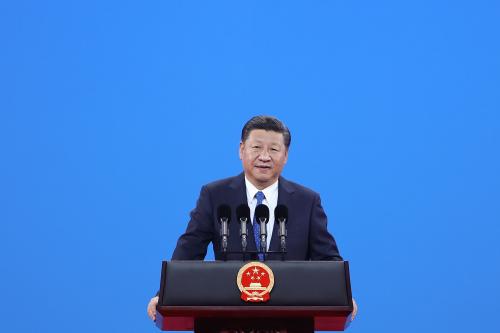
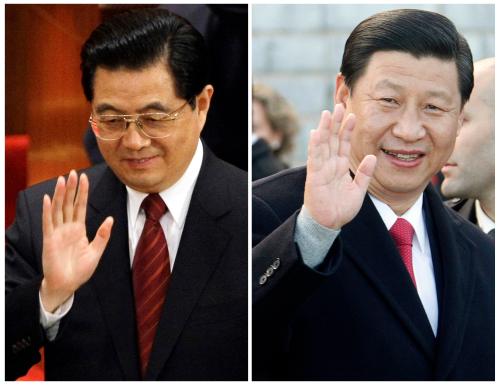
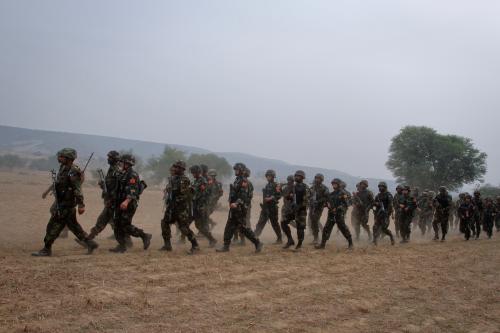
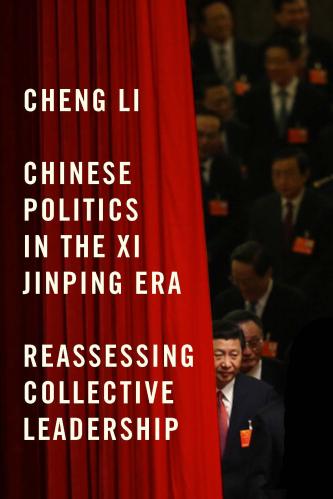
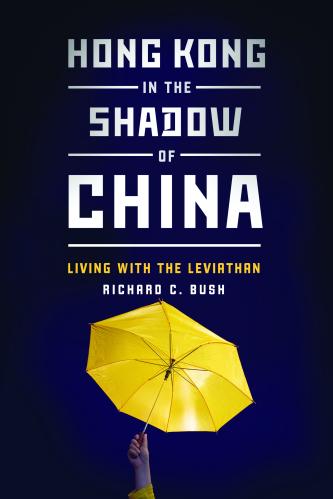
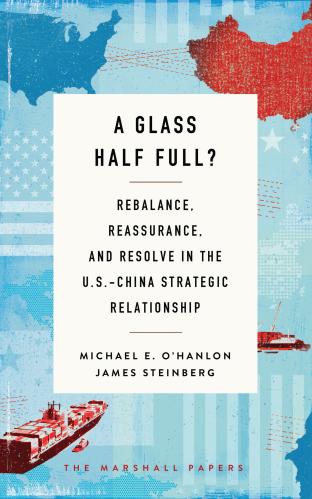




Commentary
Hu’s to blame for China’s foreign assertiveness?
January 22, 2019